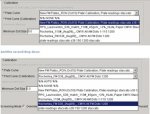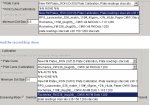I am in a newspaper production department and we are using Windows with CS3 Suite with a ISONewspaper30v4 profile. Our pages are output as .XPS files through Prinergy Evo 5.1 , which is using the ISOnewspaper26v4 profile, outputting as .PDF to our print centre's Goss web offset. Until recently, Evo was using the USWebcoated(SWOP) profile and the colour reproduction wasn't too bad, but since changing to the 26v4 profile, the colours have been very light and clients are starting to complain.
I have 2 questions:
1: Is there a conflict with us using the 30v4, then having the 26v4 profile applied later?
2: Does the Prinergy profile get applied to the whole page on the way out or is it only to objects on the page which haven't that profile applied?
Looking forward to your replies.
Cheers
I have 2 questions:
1: Is there a conflict with us using the 30v4, then having the 26v4 profile applied later?
2: Does the Prinergy profile get applied to the whole page on the way out or is it only to objects on the page which haven't that profile applied?
Looking forward to your replies.
Cheers















